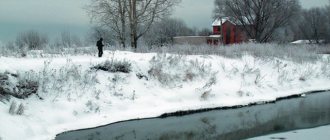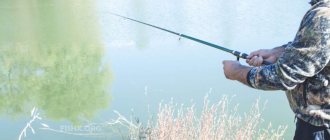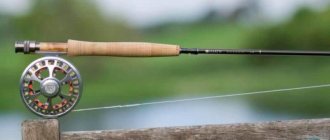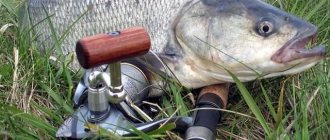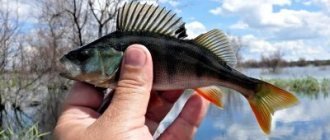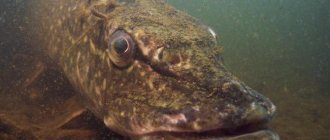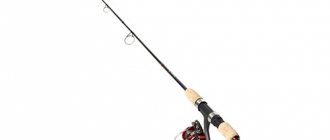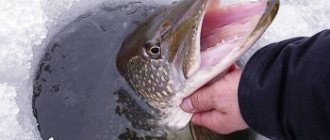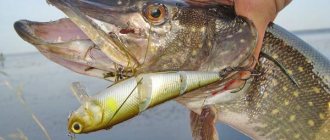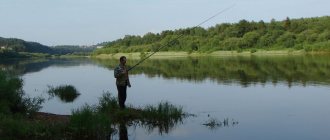how to catch pike with nets
My friends and I are planning to go fishing for pike, but we want to catch this fish with nets.
I would like to know if anyone has managed to catch pike with nets and how to catch pike in this way. In our waters there is no other predatory fish for which so many ingenious methods have been invented and so many artificial baits have been developed. If you carefully examine the entire arsenal of fishing accessories sold, then every third one will turn out to be intended specifically for pike fishing. Moreover, pike often take highly specialized baits that are clearly not designed for it.
And although such bites, if the angler is not ready for them, end in a bite of the fishing line and a spoiled mood, they, without a doubt, fuel interest in fishing and introduce an element of unpredictability into it. During the zhora period, the predator grabs almost everything that even remotely resembles a fish, frog or waterfowl chick.
KNOWLEDGE OF PIKE HABITS IS A GUARANTEE OF SUCCESSFUL FISHING One species of formidable predator evokes admiration for its natural strength and beauty. And the open mouth of a large specimen, framed by fangs and strewn with a brush of needle-shaped teeth driven inside the mouth, is somewhat reminiscent of a wolf. Pike is an ardent individualist. Having reached a certain age, it takes its specific place in the reservoir and “masters” its territory. The pike begins to live separately, not yet gaining 50 g of weight. But if there is too high a concentration of pike in a reservoir , competition arises between them. In this case, the search for your place is delayed for an unlimited period. The best, promising areas of the reservoir are occupied by older specimens, so juvenile pike inhabit the coastal strip. Usually she chooses places near reeds with a favorable microclimate, that is, sufficient flow and a high content of oxygen dissolved in the water. Natural shelter for pikes are snags or grassy vegetation.
The concentration of fish in such an area is high. Fishing here can be very effective, and the bite can last throughout the day. But specimens will rarely reach a weight of 500-600 g. The coastal zone also has its most favorable places, and the competition for them is so great that sometimes it seems that pikes line up to occupy them. From one or two holes you can often catch as many fish as from all the others combined. Pike, having gained the required weight, as a rule, tend to settle in deep snags, the edges of flooded ravines, holes with weak currents, that is, they go into the depths, where they reach impressive sizes. Deep pikes are distinguished by their slab-like, tightly knit body, slightly flattened on the sides.
The dimensions of the body of individual specimens at first glance create the impression of proportion, which, however, is typical for all predatory fish that spend most of their time at sufficient depth. As a rule, it is from this pike “breed” that real giants grow, weighing up to 10 kilograms or more. In contrast to this type of pike, there are individuals whose length greatly dominates their width. They live and forage, as a rule, in the dense vegetation of overgrown reaches. Their serpentine body helps them freely move through the jungle of underwater flora. At Low concentration, although such pikes are inferior in weight to deep ones, they are capable of reaching considerable sizes. As a rule, they smell like mud and are completely inferior to their deep-seated counterparts in gastronomic terms. Some pikes, unable to withstand the fierce competition, remain in charge of the coastal edges near the reeds. Usually they are of little interest to anglers, since they do not reach a decent weight.
In fishing folklore they are called “grass fish”. The territory they occupy is quite limited, and moreover, it has to be shared with other similar specimens. Instead of actively feeding, they are forced to stand in ambush for days, since there is not enough food supply for everyone in a small area. Each pike has its own shelter, its own route, which is a certain closed circuit. The more favorable the weather and seasonal conditions, the longer the route. With a large concentration of predators, several large pikes can live in one snag. During the feast or under certain weather conditions, they come out to the nearest sandbank and can attack live bait almost simultaneously, which creates the illusion of a school of pike. The predator, which has reached a weight of 5 kg, rarely tolerates competitors close to itself and keeps them at a decent distance.
Such a predator will never hunt on a sandbank far from the pit. Pike most often attacks from its usual hiding place, setting up an ambush there. But under favorable conditions or in the absence of food, it, hiding behind the folds of the bottom, carefully moves along the route laid out once and for all in search of fish. A pike can ambush or suddenly attack a victim anywhere in its territory. The paths of small pike (weighing up to 1 kg) in the coastal zone intersect all the time; medium pike (1.5-3.0 kg) - extremely rare, only during the pre-spawning feast, when each predator tries to expand its territory at the expense of the other. The paths of large pikes (5 kg or more) practically never intersect. The routes of several predators converge in one favorable and well-located place for them. This is usually a fontanel or some kind of shelter.
Catching pike in the spring on a net. Fishing with nets in spring. Catching pike with a net in spring.
The best lures for pike fishing in spring
One of the best lures for pike fishing in the spring are light oscillating spoons made of thin metal sheet. Such baits can be used over algae or in windows among aquatic vegetation without fear of snagging. They must meet the following requirements:
- length from 5 to 6 centimeters;
- small form, corresponding to the taste preferences of the fish;
— bright colors for muddy water;
- natural color for clear water.
Fishing in the spring is often effective with silicone baits. Small jig heads perform well in shallow water. Nozzles made of edible rubber with flavored additives and a length of up to 12 centimeters work well. If the weather is cloudy, you should give preference to colors such as:
- yellow;
- white;
- orange.
On sunny days, the predator pecks at dark-colored rubber. The type of silicone imitation does not matter much.
When the pike becomes active, spinners with silver and brass petals are used. They vibrate strongly when retrieved, so pike notice such bait even in dirty water. Sometimes the most effective are spinners with silicone attached to the tee.
For the shallowest water areas, surface wobblers with a depth of up to 1 meter and a length of 5 to 10 centimeters are suitable. For spring fishing, it is better to choose a minnow with a bright design.
Using nets when fishing for pike
The net remains an extremely popular fishing tool, since the abundance of cheap Chinese products does not require weaving them yourself, and even without special skills you can count on a good catch. This works well for a variety of white fish, but net fishing for pike is not so easy. The toothy predator is usually dispersed throughout the reservoir, and is mostly inactive, as it hunts from ambush. In this regard, pike are caught in nets relatively rarely.
Mesh size and tactics
The net for pike fishing is selected based on fishing conditions and the expected size of the prey. For small rivers, where the size of a toothy predator rarely exceeds one or two kilograms, a 40 mm mesh is quite sufficient, but in places where a decent-sized predator is often encountered, it is necessary to use options from 60 to 80 mm. Large-mesh nets are especially often used on Siberian rivers. However, you should not use options that are too large and thick. The mesh pattern of too coarse gear can scare away predators, especially in clear water.
The choice of installation location largely depends on the size and characteristics of a particular reservoir. It’s easier if the river or pond is already familiar from spinning or feeder fishing - you already have a rough idea of where fish are concentrated and the usual routes of their migration. Otherwise, there is a chance of getting a lone pike accidentally caught in the net. There are also differences depending on the season. In the spring, the net is often placed with a slope of 45 degrees in depth; at the same time, you can try to cover the detected anomaly of the bottom topography, since in such places fish often rise from the depths.
Spring
Let's find out which nets to catch pike in the spring. The so-called “path” is rightfully considered one of the most productive options at this time of year. It allows you to block a section of the river at a certain depth, and the catchability of such gear is ensured by the seasonal behavior of the pike. At the very beginning of spring, this fish begins to prepare for spawning - it rises upstream of the river, in search of shallow waters suitable for spawning, which will be formed during the flood. Anglers take advantage of this movement, blocking the river in several places where pike paths pass. However, it is precisely at this time that nets can cause the greatest damage to aquatic life.
At the same time of year, in sections of rivers where a significant number of pike accumulate, mesh lines, as well as other types of trap nets, are also effective.
Selection of gear and fishing techniques
Retrieving pike in spring should be done slowly, so that weak fish can keep up with the movement of the baits. Lures
can be:
— light small wobblers;
— spinners ranging in size from 4 to 7 centimeters;
- poppers;
- silicone jig heads.
In April-May, pike stay near the bottom, so you need to select recessed equipment that is suitable for great depths and can be used in shallow water. Spinning and oscillating spoons have shown themselves to be excellent in spring fishing. They provide a low tracking speed and attract predators with the movements of their petals. When fishing for pike after spawning, you can switch to heavier spoons. Poppers ranging in size from 8 to 10 centimeters are used at the very beginning of the season and at the end of it, when the fish move into shallow water and into the upper layers of the water. Such baits are carried out with periodic, not too sharp jerks.
Summer fishing
Fishing for pike in summer requires a slightly different approach. The probability of a toothy predator getting into the same “path” at this time of year is significantly lower, so you have to use slightly different tactics. Double-walled and three-walled nets are used, into which the fish are literally driven by the fishing participants. The net is installed in front of the reed growth line, and then the pike is driven into the net by hitting the water with special devices.
To hit the water, they use either a cunningly shaped wooden device like a quok, used when catching catfish, or they use a simpler product - the cut off neck of a plastic bottle, put on a stick. Impacts on the water force the pike to leave its favorite ambush spot, and this method of fishing works most actively not against a hunting pike, but against a pike that is already well-fed.
Using networks in winter
Nets are also used in winter. Targeted fishing for pike is usually not carried out at this time of year, but it is often caught as bycatch. It is important to consider that not every body of water is suitable for such fishing. It must be either a fairly large river or a large pond with great depths. Particular attention should be paid to the cleanliness of the bottom - if the river is littered with various debris, submerged trees or boats, then frequent breaks of gear cannot be avoided.
Installing a net in winter is more complicated than in the open water season, and requires both a large number of participants (the longer the net, the more) and additional devices. The installation process itself looks like this:
- Snow is removed from the ice in the places where fishing will be carried out, two main ice holes are prepared, between which several smaller ones are drilled at a distance of 3-4 meters - they will be needed in order to install and, if necessary, correct the net.
- A special rope is pulled through the top of the net, using which the net will be pulled under the ice.
- The end of this rope is tied to a long, even pole, through which the net will be stretched under the ice from hole to hole.
- The lower edge must be covered, otherwise it will not be able to straighten out correctly and perform its task properly.
- In the holes drilled between the main ones, the net is fixed to the sticks so that its upper edge does not touch the ice, otherwise it may freeze into it, which can lead to damage to the gear.
There are alternative, somewhat simpler ways to set up nets under the ice. A more expensive device, but one that greatly facilitates the installation of gear, is the so-called “torpedo”. The device is equipped with a fairly powerful electric motor, as well as bright LED lights that allow you to determine the location of the device under the ice.
Casting networks
Although this variety is intended primarily for catching schooling fish species, it is possible, however, in a similar way, naturally with the proper skill, since this version of the net is more difficult to master, to catch toothy predators. To do this, you need to know well the favorite spots for pike. The technique for using the casting network is as follows:
- First of all, the tackle must be properly folded, because nothing should prevent it from turning around during the throw. The traction rope is folded on the hand, and you need to watch carefully so that no loops form on the cargo rope.
- The net is intercepted by the upper part and rolled up on the hand in several loops (their number depends on the size of the gear used).
- With several swinging movements, or with one fairly sharp one, the casting net is thrown onto a pre-selected area of the reservoir.
- Thanks to the weight, the net quickly sinks to the bottom, and all that remains is to pull it out by the rope attached to the base.
Fishing this way is interesting, but you most likely won’t be able to catch something immediately after purchasing the gear; it will take a lot of time to master it.
Pike fishing will be discussed in the video:
How to make a circle tackle yourself?
The tackle has become quite widespread primarily due to the possibility of making it with your own hands using scrap materials.
The algorithm of actions in this case is as follows:
- First, the main part is created. As a rule, it is represented by a circle, which is recommended to be made from linden. This breed lends itself well to processing and is light in weight. It is worth considering that after some time of use the wood gets wet, and the structure ceases to serve properly, and a variety of problems appear. That is why, recently, packaging foam is often used in manufacturing, which can last for quite a long period.
- A wide variety of products can also be used as a vertical pin. The peculiarity of this element is that at the end it should have an extension in the form of a ball. In the upper part, the pin used tapers, creating a hole for attaching the fishing line.
- When creating a homemade design, you need to provide the ability to adjust the height of the circle. Windage largely depends on this parameter.
- The recommended dimensions of the main part, which is made of wood or plastic, are as follows: diameter 10-15 cm, thickness 2 cm. The tackle is made more visible on the water surface by painting the upper part red.
- It is recommended to use a nylon cord as a fishing line, the thickness of which should be at least 2 mm. It is not recommended to use a wicker version.
- The recommended hook, which is attached to the pin, has a length of about 20-30 cm. The cross-sectional value is 0.3 mm.
Note! The homemade design has the required performance characteristics. It is important to choose the right place for fishing, as well as follow the recommended technique.
Fishing with nets
Fixed nets are not used specifically for pike fishing: the predator is too scattered throughout the reservoir, too often leads a sedentary lifestyle - a short throw for prey and return to ambush. The spring concentration of pike occurs in places where it is much more convenient to use not nets, but meshes and other trapping gear. In general, in a net with a mesh suitable for catching it, pike is caught by chance, as bycatch.
Pike are generally caught in floating nets (floated downstream with a boat or between two boats) in exceptional cases.
However, pike often attacks fish caught in a single-walled (gill) net for catching small fragmented fish, the most common in Russian reservoirs - that is, perch and roach (amateurs use single-walled nets with a mesh of 27–32 mm to catch them). Sometimes the matter ends with the capture of a predator (usually small, weighing up to 1 kg). Moreover, the pike does not mesh as it should - the mesh is too small for it, but it gets caught in a rather sophisticated way: having caught on the net with bony protrusions on its lower jaw, it begins to fight and wraps a nearby section of the net around itself, forming something like a cocoon. Very often, if the predator has time, it slips out of this cocoon - and if the fisherman checks the net at the very end of the release process, he will be surprised to find a pike held only by the tail by the net wound around it. If you are late, you can only find the notorious cocoon of tangled fish, richly saturated with pike mucus.
Large pikes are not caught in this way - having grabbed a roach or perch entangled in a net, they easily tear the thin fish with their teeth and leave only a hole in the net as a souvenir of their visit.
Not so long ago in Finland, a net was invented and patented for catching pike and other large predators - not schooling ones, roaming alone in a reservoir. Moreover, the bait should be small fish entangled in the gear.
Three options for finding pike
In the tactics of finding cool places, I see three options: visual searches, test fishing and installation of girders. Visual searches can be successful. The only problem is that on different channels the predator can hunt at different times of the day. Of course, noisy pike hunting on canals is rarely observed. But the attentive eye of an angler is able to notice both the light breaker of a pike attack and the fan of a verkhovka fleeing from a merciless predator. An error is practically excluded, since on the canals (at least on those where I had to fish) perch is absent or very rare. So if the morning turns out to be quiet and windless, then I get on my bike and go out to explore new places. The only “gear” I take is binoculars. I secretly mark interesting areas, and will definitely return here if the opportunity arises. Such reconnaissance can be very fruitful and saves a lot of precious fishing time.
But pike often hunt very secretly, all its actions are lightning fast, invisible under a thick carpet of duckweed. Of course, you can fish the ditch with test fishes, moving from one area to the next. It takes a lot of time, but there is nothing else to do. Unless you try to find pike places by first installing girders. However, not only do I not like fishing for pike with girders, but I also need a lot of them. After all, as I already noted, completely fishless areas are common, and quite extended ones at that.
During test fishing, I also tried to use a spinning rod, although not very successfully. Pike on the canals are cautious and suspicious, so we had to throw bait along the reservoir. The bites occurred no closer than 15 meters. It was possible to fish only with shallow-water wobblers in small windows among the grass. Often, strong winds made it impossible to accurately place the bait in such a window. In short, only live bait on a float rod did its job well and regularly brought excellent results.
